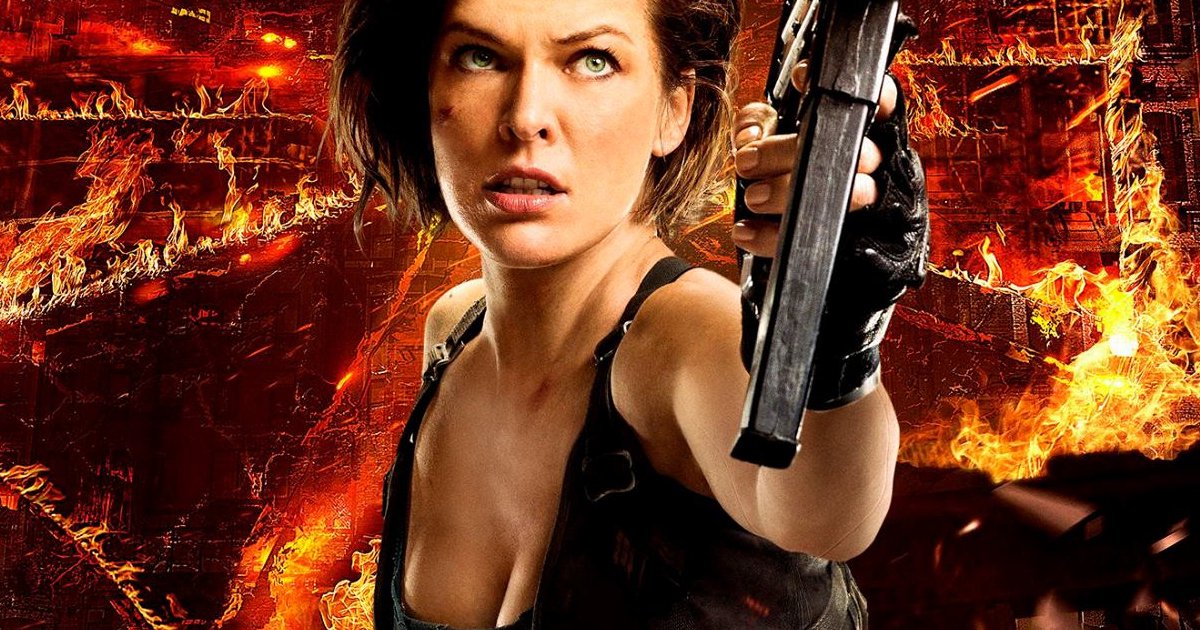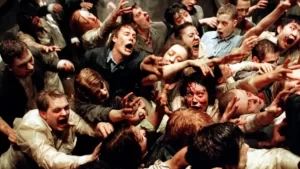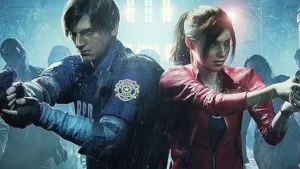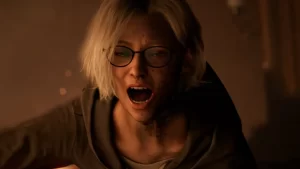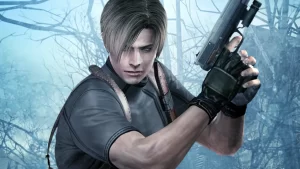Complete Global Emancipation
A Film Review of Resident Evil: The Final Chapter
Freedom; we are free at last. Mind you, we aren’t free from tyranny, oppression, or persecution, or even annihilation because these are all very real possibilities in the very real world of 2017 and beyond, but at the very least we will be spared from any further fictional perversion of the Resident Evil franchise by writer/director Paul W.S. Anderson. The last installment of the modestly profitable film adaptation series based on one of Capcom’s formerly pristine IPs has been wrapped up in exactly the same fashion as it began: unassuming and trite. Way back in 2002, Mr. Anderson somehow pitched Capcom with a vision of this franchise that seemed to deviate slightly from the core story, featuring an invented protagonist that could possibly coexist with what fans knew of the general story at the time.
Its five subsequent sequels have since regarded the video game lore as window dressing and relegated its main characters as flat side kicks. I do not criticize these films for attempting to stand apart from the source material. I criticize them for yielding stories as deep as wading pools, characters whose only intrigue are their abilities to produce infinite ammunition and their incessant use of convenient plot devices to barely hold anything the audience sees and hears together as coherent. I cannot endorse the tales of the original games as seminal works of fiction, but what made them resonate with consumers was the story’s layered global conspiracy, colorful characters, mystery, suspense and of course survival horror. The only priorities for the film adaptations have always been acrobatic kung fu and bullet storms.
Thus, Resident Evil’s “Final Chapter” reveals itself as a sequel clone no different from its predecessors. It is a movie so unconcerned with story that it takes great pains to remind the audience of the events of previous films while simultaneously invalidating said circumstances with plot gaps that boggle the mind. Milla Jovovich channels her inner 80s action star once again, proving that women can helm these kinds of franchises. Unfortunately, like her meathead brethren of the past, her character’s appeal, drive and MO do not exceed the concept of unstoppable killer of improbable durability. Action, gunplay, explosions and monsters are a plenty, which is impressive considering this film’s meager $40 million dollar budget, but I would trade all 106 minutes of this film for one 10 minute, super powered death battle between Alice and Wesker featuring the best stunt work, CG, pyro and special effects money could buy. Since story is irrelevant anyway, this would at least be entertaining and it would make some sense.
|
Action Style |
There’s a solid variety of action here as gun nuts will be fairly satisfied with the ballistics as well as plenty of close quarter kills with the appropriate abundance of gore as well as the kind of martial arts one would expect Captain America to be capable of. Some of the wire work is goofy, making some stunts look too implausible even for suspended disbelievers. |
4/6 |
|
Action Frame |
Standard fare cinematography combined with classic tricks like quick cutting close up shots maximizes minimal budgets, while dampening the impact of said action in the first place. |
3/5 |
|
Lead Performance |
This is Milla Jovovich’s franchise without whom would not exist thanks to her looks and dedication to the physical demands of the role. As for the dramatic demands of the role … wait a minute … were there any? |
3/6 |
|
Supporting Performance |
I wish Iain Glen had more to work with than “evil terrorist determined to rule the world,” but he was nefarious enough even if the audience didn’t buy him as a physical threat to Alice. Shawn Roberts’s Wesker is hamstrung even further by the script, being relegated to literal inactivity thanks to budgetary constraints. All others are performances best kept in commercials. |
2/5 |
|
Music |
Screeching electric guitar riffs or German techno pop: the choice is yours. Whatever happened to that haunting theme song from the first movie? |
1/6 |
|
Sound F/X |
Weapons of various caliber sound decent enough as do the moans, groans and screams of monsters, but the sound mix could have been crisper. Tech gadgets and vehicles sound pretty cool as well. |
3/5 |
“Moving” = 16/33
|
Digital F/X |
I would bet that if the 3D renders of some of the larger monsters were put on plain, white frames, their design would look much more basic. As such, dark frames and quick cutaways cover up some average work. Also, slow-motion super soldier visuals are so overplayed. |
3/6 |
|
Special F/X |
These work better the tighter the camera gets into the characters such as stabbing, gutting and slicing zombies or any other opposition. The wider the action gets, the more reliant it is on CG. |
3/5 |
|
Costumes |
Thrift shops aplenty were certainly raided for this particular cast with the exception of Umbrella operatives whose tactical gear was very fitting for end of the world survival. |
3/6 |
|
Hair & Makeup |
Every character gets beat up, chewed up and spit out and the lasting impressions are serviceable and sensible. |
4/5 |
|
Exteriors |
You can tell every external shot (especially super wide shots) were assisted greatly by CG and it all looks impressive as a world torn asunder by zombies and nuclear war. |
4/6 |
|
Interiors |
These are fairly bland and empty throughout the entire film save for the third act within the last chambers of Umbrella’s stronghold which is dressed and designed quite well. |
2/5 |
“Picture” = 19/33
|
Hook |
Last we saw Alice, she made an uneasy alliance with Wesker on top of the White House to survive an epic zombie horde … now none of that is relevant, but now we gotta save the world, or whatever is left. |
1/4 |
|
Conflict |
Alice versus Umbrella. It’s ALWAYS Alice versus Umbrella. The audience does not need to be reminded of how corporations callously regard its own consumers. Really, we get it. |
1/4 |
|
Resolution |
Good guys win, bad guys lose, and as always, England prevails! Yawn. |
1/4 |
|
Dialogue |
Dialogue between Alice and anyone else not named Dr. Isaacs is an atrocious fail. Dialogue between these two characters only elevates slightly more to “I hate you even more than before. Grrrr!” |
2/6 |
|
Exposition |
The Red Queen has always been and continues to be an expository tool, but I am amazed at how many dialogue scenes are specifically devoted to random exposition necessary to justify where the plot twists and turns because it had no setup in the first place. Too many devices covering too many holes. |
1/5 |
|
Character Uniqueness |
Alice is the exact same, zombie hunting, monster killing soldier from every previous film. Dr. Isaacs is evil with his own agenda. Wesker is somehow less interesting and threatening than before. There’s no growth and less depth. |
2/6 |
|
Character Relatability |
The everyman/everywoman’s pariah journey is somewhat relatable for the guilt ridden, but complete, global, saturation makes precious little rational sense, yet still works for token “big bads” in just about every action film these days. |
2/5 |
“Story” = 10/34
Overall MPS Rating: 45/100
With only $40 million dollars to pay for location shoots in South Africa, 3D/IMAX conversions, Milla’s salary, all the CG and special effect work, as well as the rest of the cast and crew makes Resident Evil: The Final Chapter more of a master class on managing expenses for a Hollywood grade production. It isn’t particularly interesting as a zombie film, a video game adaptation or as an audio-visual form of entertainment in general. This is a plain and simple “avoid at all costs” movie. Forget it exists and play Resident Evil VII, or better yet, any of the original video games instead. The summer blockbusters can’t come soon enough.

